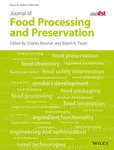Microbiological, chemical, and sensory characteristics of Arishi cheese
Abstract
Arishi, a traditional Lebanese cheese produced from whey, has a short shelf life of 1 or 2 days. This, in turn, limits its market availability and raises food safety concerns about it. In this paper, we proposed modifying the traditional processing method by incorporating an additional pasteurization step to produce a safer product with a longer shelf life without the addition of any preservatives. Implementing this change, the shelf life of Arishi was extended to 5 days under refrigeration. In addition, the sensory evaluation showed no significant differences between the traditionally manufactured and the pasteurized Arishi for overall acceptability, flavor, texture, and appearance. On the other hand, the pasteurization step significantly decreased the moisture content, but no significant change was found for fat or ash contents.
Novelty impact statement
Adding an extra pasteurization step or reducing the pH to 4.3 in the making of Arishi cheese resulted in a safer product and longer shelf-life. Sensory evaluation showed no significant differences between the traditionally manufactured and the pasteurized Arishi. This would ultimately enhance the product’s marketability and reduce food waste of Arishi cheese.
CONFLICT OF INTEREST
The authors have declared no conflicts of interest for this article.
Open Research
DATA AVAILABILITY STATEMENT
Research data are not shared.




